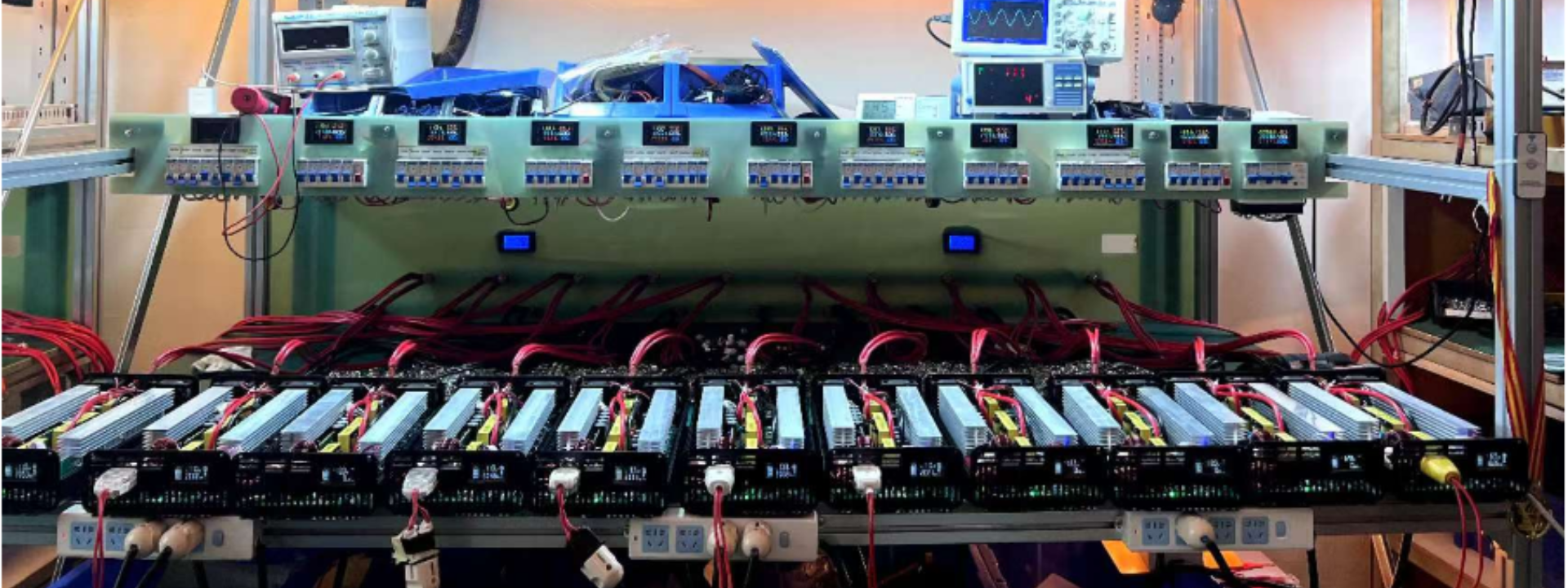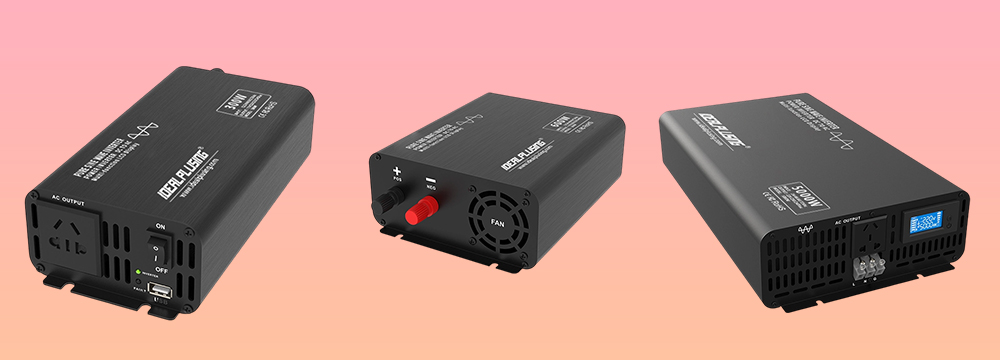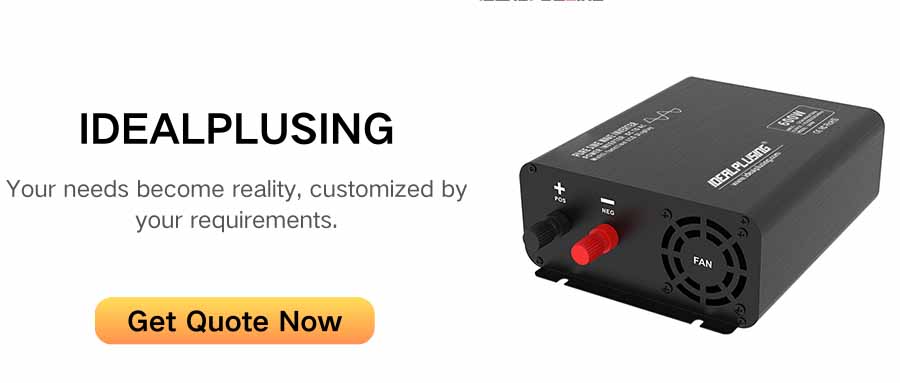A car inverter is a device that can convert the DC power of a car battery into AC power. Its output voltage and current can be controlled by electronic components for general electrical appliances. A car inverter usually consists of four parts: an inverter bridge, a filter circuit, a control circuit, and an oscillator. Its working principle is to first convert the 12V DC power provided by an external battery or a car's own battery into a 265V voltage through high-frequency PWM (pulse width modulation) switching power supply technology, and then convert the 265V voltage into an AC power of about 30kHz-50kHz and 220V. Then, through rectification, filtering (square wave or sine wave can be obtained after filtering), pulse width modulation, switching power output and other related technologies, the AC power of about 30kHz~50kHz and 220V is converted into an AC power of 50Hz and 220V.

How to choose a car inverter
Car inverters usually use pure sine wave output, with a pure and stable waveform, which can meet most of our power needs. The square wave has poor load capacity, which is only 40-60% of the rated load. It cannot carry inductive loads. If the load is too large, the third harmonic component contained in the square wave current will increase the capacitive current flowing into the load, and in severe cases, it will damage the power filter capacitor of the load.
A car inverter is a device that converts car power into direct current, which can be used to provide stable power for various electronic devices. When choosing a car inverter, you need to consider multiple factors to ensure that the selected inverter can meet your needs while ensuring safety and reliability.
Considerations for selecting a vehicle inverter
The following are several key factors to consider when choosing a car inverter:
1. Output voltage and current: Select the appropriate output voltage and current according to the power requirements of the electronic equipment you want to connect. Make sure the inverter's output voltage and current can meet the needs of your devices and has proper voltage and current regulation.
2. Input voltage and current: Check the voltage and current that your car power supply can provide to ensure that the selected car inverter can work properly. If your car power supply is limited, you may need to choose a car inverter with low input voltage and current.
3. Power: Select a car inverter with sufficient capacity according to the total power demand of your electronic devices. The power of a car inverter is usually expressed in watts (W) or volt-amperes (VA). Choose an inverter with sufficient capacity to ensure that it can provide enough power for all devices while avoiding overloading and overheating.
4. Conversion efficiency: Choose a car inverter with high conversion efficiency, which can ensure less energy loss and longer battery life. Generally speaking, a high-efficiency car inverter has lower heat generation and lower noise levels.
5. Safety: Make sure the selected car inverter meets the electrical safety standards of relevant countries and regions. Choose a car inverter with safety features such as overload protection, short circuit protection, and temperature protection to ensure the safety of your equipment and personal safety.
6. Portability: Consider the location and space you want to place the car inverter in your car. Choose a car inverter that fits the space in your car while ensuring that it is easy to install and use.
7. Brand and price: Choose a car inverter with a well-known brand and a good reputation to ensure the reliability of quality and after-sales service. At the same time, consider your budget and choose a car inverter with high cost performance.
In short, when choosing a car inverter, you need to consider the above factors comprehensively to ensure that the selected inverter can meet your needs while ensuring safety and reliability. When purchasing and using a car inverter, you also need to read the product manual carefully and follow the usage guide to ensure the safe and effective use of the device.
In addition to the factors mentioned above, there are some other things to consider
Interface type: Choose a suitable car inverter according to the interface type of the electronic device that needs to be powered. For example, if your device uses a USB interface, you need to choose a car inverter with a USB interface.
Appearance design and material: Consider the appearance design and material of the car inverter to ensure that it is coordinated with the interior decoration style of your car, and has sufficient durability and stability.
Intelligent control: Some high-end car inverters also have intelligent control functions, such as remote control through mobile phone APP, power display, etc., which can improve the convenience of use.
Certification and compliance: Make sure that the selected car inverter meets the electrical safety standards of relevant countries and regions and obtains corresponding certification. This will help ensure that there will be no safety problems during the use of your device.
In short, when choosing a car inverter, it is recommended to consider the above factors comprehensively and weigh them according to your actual needs. When purchasing a car inverter, it is recommended to choose a formal channel and a reputable merchant to obtain better after-sales protection and use experience.
IDEALPLUISNG Power Expert:
We focus on the research and development, sales and services in the fields of DC-DC power modules, AC-DC rectifier modules, DC-AC inverters, AC power supplies, DC power supplies, LED power supplies, chargers, rectifier systems, etc., providing personalized, efficient, reliable and cost-effective power solutions for all walks of life.
Thank you for considering our services.








